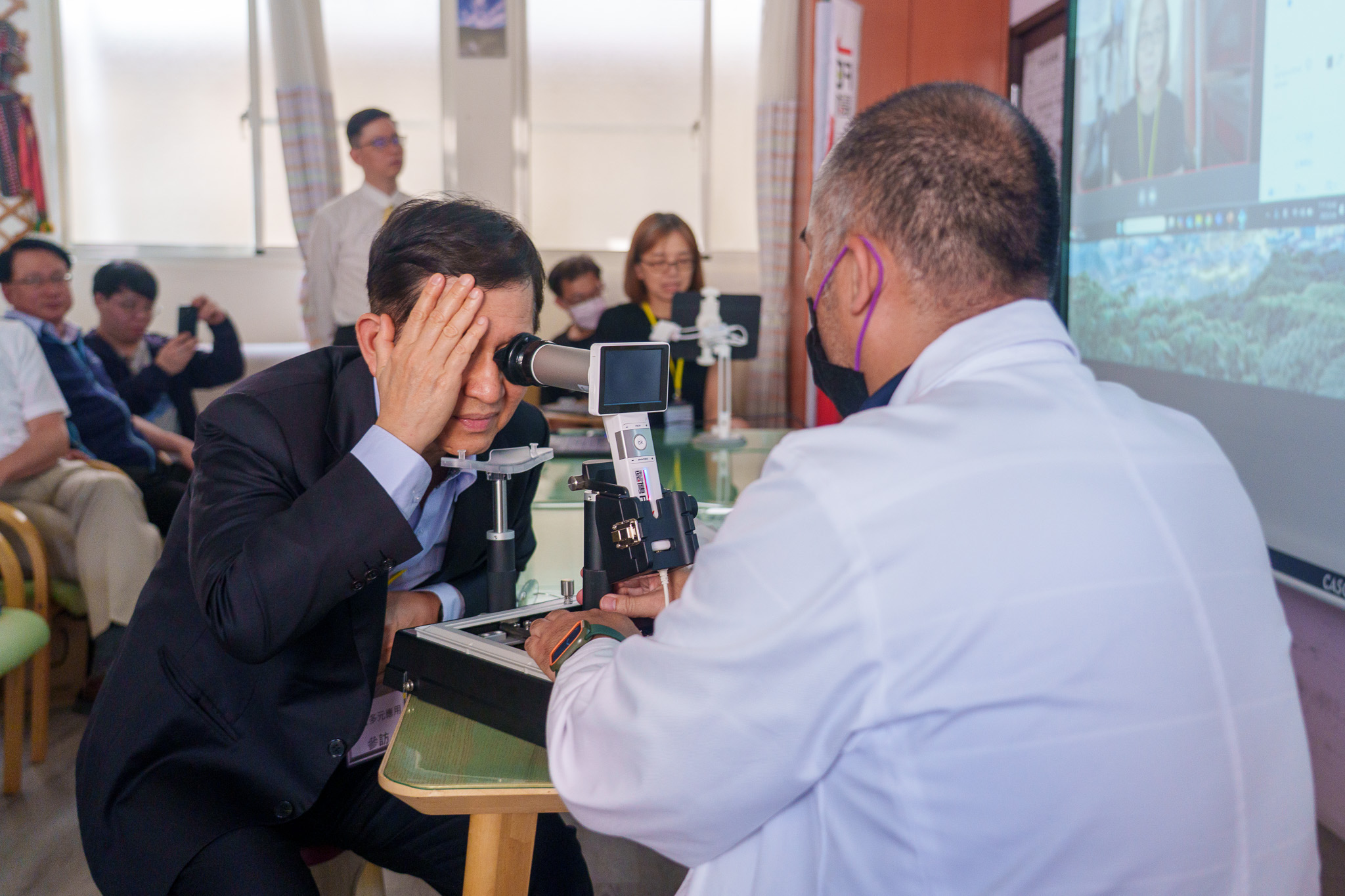Public-Private Partnerships to Enhance Digital Service in Remote Area and Promote Digital Transformation of Smart Medicine
To realise digital equity and promote the application of 5G technology in local-level healthcare, Minister Yennun Huang led a team to the Maolin District Public Health Center in Kaohsiung City on May 6th to conduct an on-site inspection of the "5G Telemedicine Platform" developed and implemented by mobile telecom operators. The visit aimed to assess the operation and effectiveness of digital services in remote areas. Minister Huang stated that by integrating 5G high-speed networks with AI-powered diagnostic platforms, rural residents can receive the same quality of medical care as residents in urban areas without long-distance travel. This initiative embodies the concept of "replacing roads with networks," creating a truly "zero-distance" healthcare environment.
According to the Ministry, the 5G Telemedicine Platform was jointly developed by Far EasTone Telecommunications (FET) and several medical institutions across Taiwan. The platform leverages 5G commercial and dedicated 5G networks to establish nationwide video consultation and outpatient services. Additionally, in collaboration with the Institute of Biomedical Engineering and Nanomedicine at the National Health Research Institutes, AI diagnostic mechanisms have been integrated into the platform, effectively breaking down geographical barriers to healthcare access.
The Ministry has been committed to enhancing digital resilience and expanding communication services since its establishment. By amending the frequency usage fee standards, the Ministry has encouraged telecom operators to invest in innovative and diverse application services, promoting effective frequency utilization and market development, thereby laying a solid foundation for diversified digital applications. Today's showcase of 5G smart healthcare applications exemplifies the realization of universal access to quality medical services through robust network infrastructure and public welfare-oriented policy implementation. The 5G Telemedicine Platform has been extended to 15 counties and cities, covering 56 rural townships, including many mountainous and Outlying Islands . The platform has accumulated over 60,000 service visits, utilizing stable 5G connectivity to expand inter-hospital consultation capabilities and extend high-quality medical resources to the most remote corners, thereby establishing a comprehensive nationwide healthcare network accessible to all.
The Ministry emphasized that technological innovation should be embedded in everyday life, benefiting all citizens, particularly in remote and aging communities. Digital applications serve as a key solution to bridging the urban-rural resource gap. Moving forward, MODA will continue to collaborate with stakeholders to guide the industry through policy initiatives, expanding the diverse applications of 5G services. This vision reflects the principle that "Connectivity is not just about internet access but about improving lives, realising digital equity.

